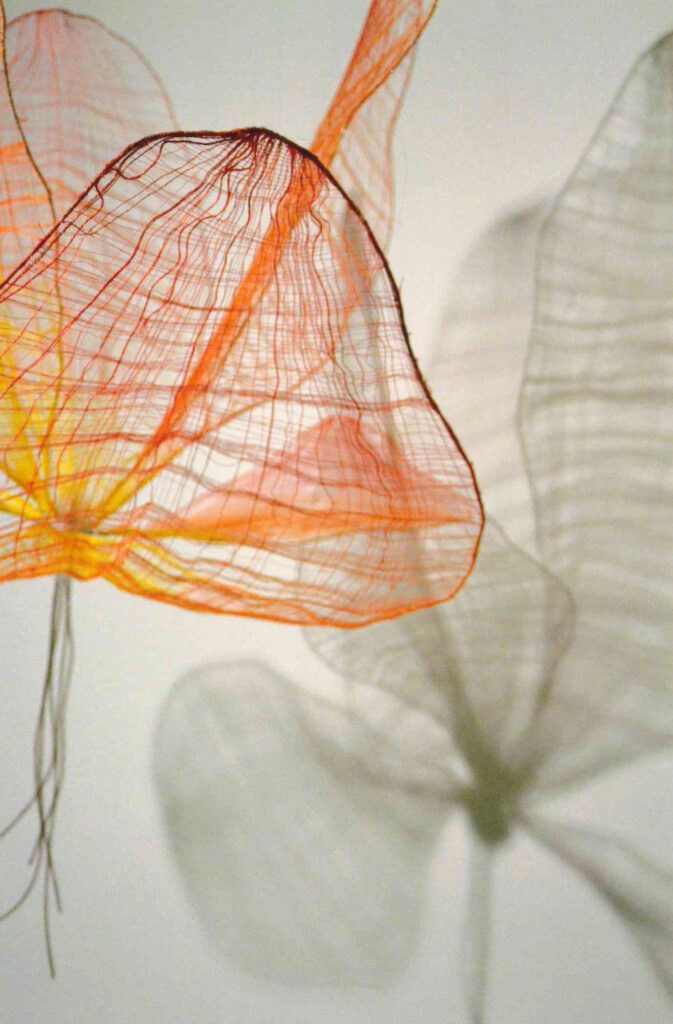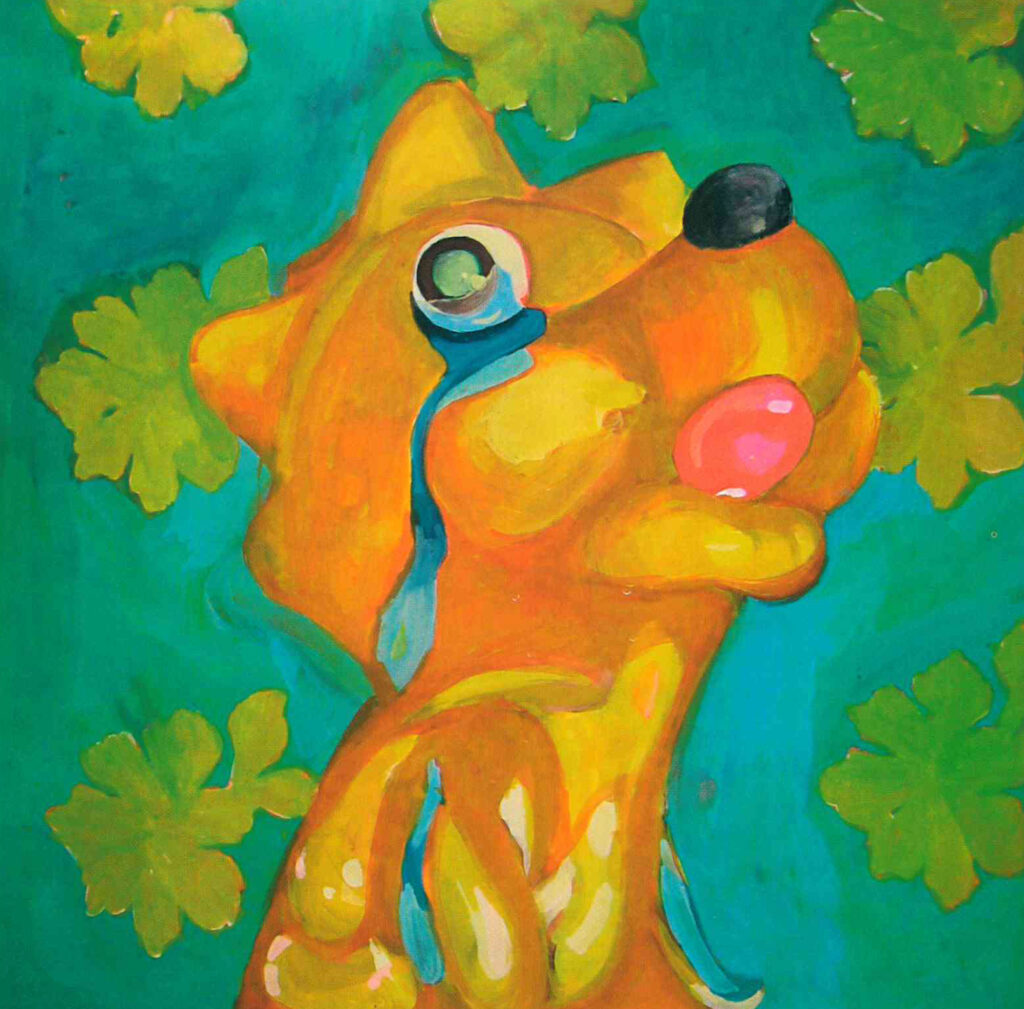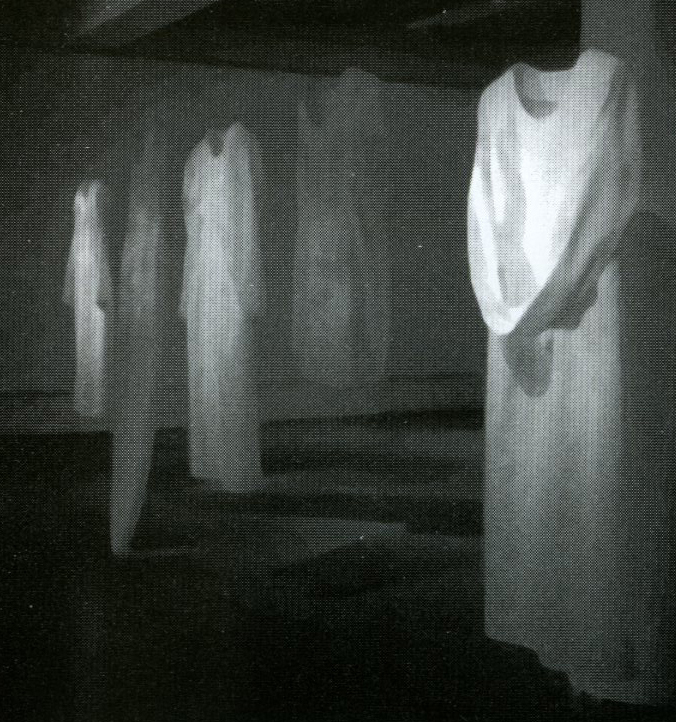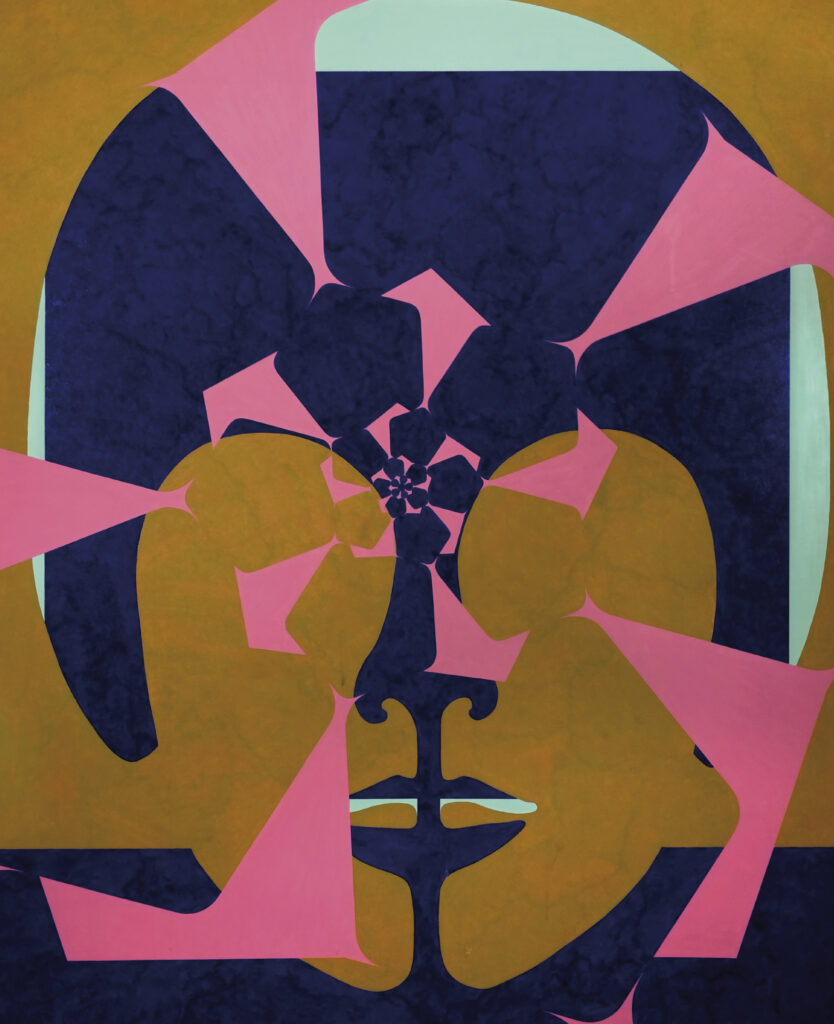
Un Monde d´Inventions
Frédéric Iriarte, born in 1963 in Paris, and educated during the first half of the 80s at the art school in Perpignan in southern France. During the 80s he was also a representative of a new art movement. The avant-garde La Figuration Libre – Free Figuration in southern France. In SP, (local newspaper Södertälje Posten) Erik Dahlberg writes… The movement was also contemporary with the emerging fantasy and fairy tale motifs in literature (Tolkien).
In 1987, Iriarte moved to Stockholm. He lived there for two years and worked, among other things, as a set designer at the Aurora Theater. He then moved to Södertälje, staying for ten years before moving on to Järna, an outlying area south of Södertälje. Iriarte’s art has been described in the press as slightly surrealistic. It has been compared to graffiti and comic art, but he himself created his own term to define his art. The first solo exhibition in his new hometown of Södertälje at Galleri Kretsen was titled Irrealism, which was also the name of his art movement. The term translates most closely to unreality. In a letter dated February 25, 2000, Frédéric Iriarte was invited by the art gallery’s then section manager Kristina Möller to exhibit separately at Södertälje konsthall. She writes in an email:
“Considering the different techniques you work in, it would be interesting if you wanted to show both painting, graphics, objects and moving images.”
The following year, the exhibition is completed and Iriarte fills the then 450 square meter art gallery with 100 of his works. The art gallery is transformed into a multifaceted universe of inventiveness. Mixed media coexists with oil paintings, sculptures and graphics. The connection to technology is made through everything between heaven and earth. This could apply to an elevator motor, a CD player or a digital camera. Johan Persson Trelleborgs Allehanda 10/5 2001.
The titles of the works are in both Swedish and French. Luminous lanterns, corkscrew, electric whisk, gears, clothespin are some everyday titles for his mixed media. The paintings usually have long and advanced titles such as Three-part Prism, form and primary material, escape from an angular rigid context and escape to another time and to another consciousness, a transformation of the substance of the brain. Three books with Iriarte’s art were sold on site. Matérialisation – Visualisation; a world of inventions was produced in connection with the exhibition and published by Raster Förlag. The book publication was made possible with the help of Jean-Marie Gustavino, the French Institute in Stockholm, the Scientific Department at the French Embassy, Philippe Legros Stockholms Konstråd, Södertälje Konsthall and Telgebostäder. Iriarte’s designed products such as T-shirts with parasites and glass were also sold at the exhibition.
In 1987, Iriarte moved to Stockholm. He lived there for two years and worked, among other things, as a set designer at the Aurora Theater. He then moved to Södertälje, staying for ten years before moving on to Järna, an outlying area south of Södertälje. Iriarte’s art has been described in the press as slightly surrealistic. It has been compared to graffiti and comic art, but he himself created his own term to define his art. The first solo exhibition in his new hometown of Södertälje at Galleri Kretsen was titled Irrealism, which was also the name of his art movement. The term translates most closely to unreality. In a letter dated February 25, 2000, Frédéric Iriarte was invited by the art gallery’s then section manager Kristina Möller to exhibit separately at Södertälje konsthall. She writes in an email:
“Considering the different techniques you work in, it would be interesting if you wanted to show both painting, graphics, objects and moving images.”
The following year, the exhibition is completed and Iriarte fills the then 450 square meter art gallery with 100 of his works. The art gallery is transformed into a multifaceted universe of inventiveness. Mixed media coexists with oil paintings, sculptures and graphics. The connection to technology is made through everything between heaven and earth. This could apply to an elevator motor, a CD player or a digital camera. Johan Persson Trelleborgs Allehanda 10/5 2001.
The titles of the works are in both Swedish and French. Luminous lanterns, corkscrew, electric whisk, gears, clothespin are some everyday titles for his mixed media. The paintings usually have long and advanced titles such as Three-part Prism, form and primary material, escape from an angular rigid context and escape to another time and to another consciousness, a transformation of the substance of the brain Three books with Iriarte’s art were sold on site.Matérialisation – Visualisation; a world of inventions was produced in connection with the exhibition and published by Raster Förlag. The book publication was made possible with the help of Jean-Marie Gustavino, the French Institute in Stockholm, the Scientific Department at the French Embassy, Philippe Legros, Stockholms Konstråd, Södertälje konsthall and Telge Bostäder. Iriarte’s designed products such as T-shirts with parasites and glass were also sold at the exhibition.
In an email to Möller dated February 8, 2001, regarding the invitation to the opening, Iriarte formulates what the exhibition offers as “/…a reflection on discovery and invention. A world where real matter becomes a visual illusion and vice versa.”
In the Pressrelease you can read:
”In his paintings, sculptures and objects, Frédéric Iriarte captures the moment or feeling when the mechanism of an idea comes into use, when the idea is born. Things are put together or welded together and from that emanates a being, half human, half machine. Perhaps the perfect human or the perfect machine.”
Perhaps as a prediction for the future that is just now taking shape with AI, Avatars, advanced robots, eerily similar humans taking over human tasks. More perfect and more efficient than real humans.
For Länstidningen’s Anna Hamrell, Iriarte tells about the intention of his exhibition:
Science and art can enrich each other. Art must try to make the impossible possible and combine concepts and ideas that may not be possible to combine in reality./…/ It is an exhibition about matter, man’s view of matter and what can be done with it with a focus on all conceivable technical and electronic inventions/…/ Above all, I want to portray man’s emotional relationship to matter and his own inventions.
Iriarte has been described as an eclectic and seemingly does not relate to any limitations in his creation. He has created paintings, sculptures, graphics, mixed media, furniture, ceramics, wine bottles, T-shirts with parasites. He is a designer of, among other things, play sculptures, a composer, a filmmaker, a publisher and perhaps other things that the undersigned is not aware of.The exhibition was inaugurated by Jean-Marie Gustavino, cultural and scientific counselor at the French Embassy. The exhibition then moved on to the Bryggeriet art gallery in Trelleborg.
Sources: Södertälje konsthalls archive, text and compilation by Anneli Karlsson.


